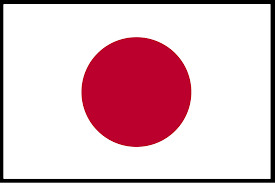The Withdrawn

The high school dropout rate in the United States is about 7%; that is, seven in 100 Americans age 16 to 24 are neither enrolled in high school nor have a high school diploma. The economic perils that high school dropouts suffer is significant: per PBS, about 30% of dropouts live in poverty, for example.
In Japan, the dropout rate is lower — culturally, the shame of not continuing with one’s education makes it less likely for someone to go that route. However, it still happens. And when it does, the effect can be even worse. Many don’t just withdraw from school — they also withdraw from society.
In the 1990s, Tamaki Saito — who the BBC described as a “newly qualified psychiatrist” at the time — found his services requested by a surprising number of parents with the same story: their children had all dropped out of school and had fallen into a state of isolation. These adolescents had locked themselves in their room for weeks if not months or even years, their only outside interaction coming via the computer screen, and often only emerging to eat. The kids — typically boys from middle-class families — were “paralyzed by profound social fears,” per the BBC. As Saito explained, “They are tormented in the mind. They want to go out in the world, they want to make friends or lovers, but they can’t.”
Since then, many Japanese researchers have studied this shut-in affliction. There’s even a term for this phenomenon of extreme reclusion: “hikikomori.” Per Wikipedia, it literally translates to “pulling inward” or “being confined.” Saito defines hikikomori as “a state that has become a problem by the late twenties, that involves cooping oneself up in one’s own home and not participating in society for six months or longer, but that does not seem to have another psychological problem as its principal source.” While some of the afflicted with hikikomori have autism spectrum disorders, that’s the minority; for most, hikikomori is the primary problem, likely caused by a traumatic event or series of events which make hiding from society seem like a good idea.
Despite the extreme-sounding diagnosis, hikikomori is shockingly pervasive. Per the New York Times, “conservative estimates” place the population of withdrawn people at between 100,000 and 320,000. More aggressive estimates conclude that there are as many as one million hikikomori sufferers in Japan — which is nearly 1% of the population. The Japanese Times shares even worse numbers — 700,000 people on the low end, 1.5 million on the high end. And the number is growing because, as the New York Times further notes, “as a hikikomori ages, the odds that he’ll re-enter the world decline.” It’s easier to withdraw than it is to rejoin society.
But there is hope for even long-term shut-ins. In 2015, ABC News (Australia) profiled an 18-year-old named Yuto Onishi, who for three years stayed in his room, “slept during the day and lived at night, trawling the internet and reading manga.” He “refused all contact with friends and family, sneaking out only in the dead of night to eat.” But an intervention, focused on counseling which involves the entire family, seems to have worked. As of that article’s writing, “Yuto has been out of his room for six months.”
Bonus Fact: According to PBS (scroll down to the bottom), 75% of crimes in the U.S. are committed by high school dropouts.
From the Archives: The Oldest Man in Tokyo: He was the oldest man there alive, except for one little problem.
Take the Quiz: Can you name the country (Japan, Jamaica, or Jordan) given the clue?
Related: “Hikikomori: Adolescence without End” by Tamaki Saito. Six reviews, averaging four stars, but that average gets pulled down by this one-star review which should be ignored — the reviewer erroneously thought that the other listed author, Jeffrey Angles, who does not have a background in psychology, had written the book. In fact, Angles was merely the translator.
